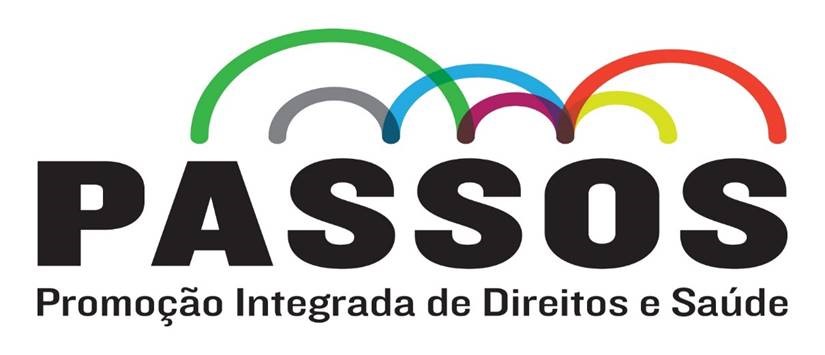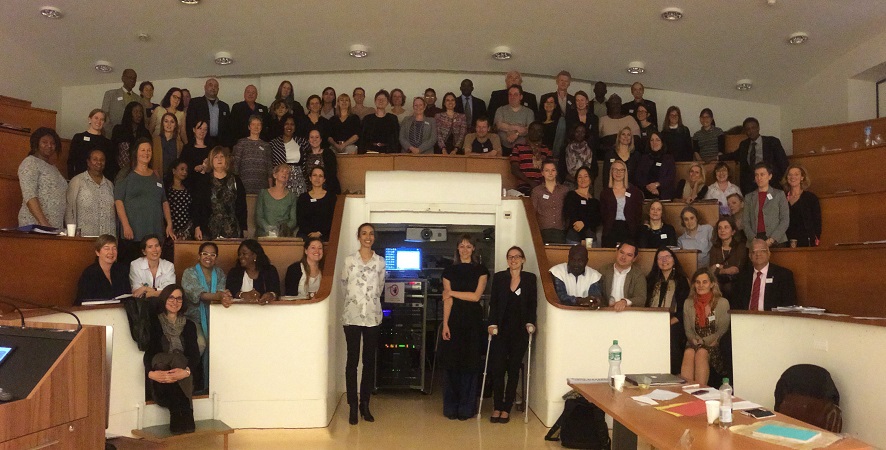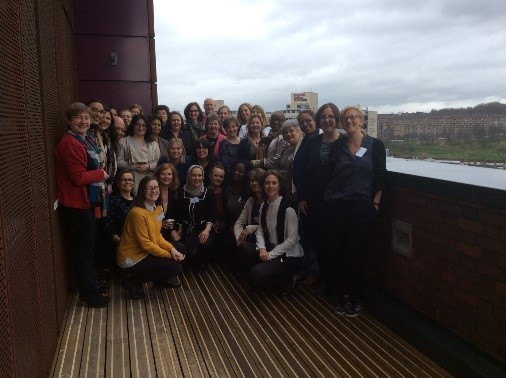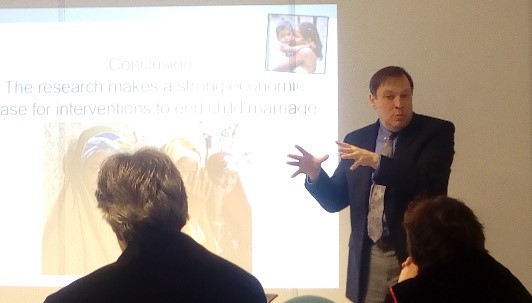Newsletter April 2017
 ICRH Global Newsletter ICRH Global Newsletter 27th of April, 2017
|
| PROJECTS |
Key and priority populations ICRH-Mozambique has started a 5-year project with FHI360 and 7 other local partners, continuing and expanding upon its previous work with key populations, in particular female sex workers.  The PASSOS project, funded by PEPFAR, aims to improve health and HIV outcomes in key and priority populations. The project will focus on increasing access to services, care and treatment, providing quality and appropriate interventions for these groups, ensuring strong references and linkages along the service cascade, as well as reducing social and structural barriers related to stigma, stereotyping, discrimination, violence, lack of legal status, and lack of freedom of association. Within the project, ICRH-Mozambique is responsible for implementing interventions in Tete province with sex workers and adolescents, for supporting key population-friendly health services in 7 other provinces, and for operational research. The PASSOS project, funded by PEPFAR, aims to improve health and HIV outcomes in key and priority populations. The project will focus on increasing access to services, care and treatment, providing quality and appropriate interventions for these groups, ensuring strong references and linkages along the service cascade, as well as reducing social and structural barriers related to stigma, stereotyping, discrimination, violence, lack of legal status, and lack of freedom of association. Within the project, ICRH-Mozambique is responsible for implementing interventions in Tete province with sex workers and adolescents, for supporting key population-friendly health services in 7 other provinces, and for operational research. |
Final conference on the FGM-PREV project Symposium ‘Challenges in estimating the prevalence of female genital mutilation in the European Union and recommendations for future estimations’.On 27-28th of February, experts on female genital mutilation gathered at this international symposium, organized by ICRH, that concluded the international research project "FGM-PREV". This project focused on prevalence estimations of FGM in Europe. It was a cooperation between ICRH (Ghent University, Belgium), INED at the Sorbonne (France) and BICOCCA University (Universita’ degli studi di Milano, Italy) and was funded by the DAPHNE programme of the European Union. The conference was supported by the Belgian Institute for the Equality of Women and Men. |
Cancer diagnostics ICRH joins forces with MDxHealth to develop ground-breaking diagnostic technology. ICRH has developed a system to employ biomarker-specific probes in a methylation in situ hybridization (MISH) platform to directly target and visualize methylation changes associated with cancer in a patient's DNA. This allows the visual detection of epigenetic changes associated with cancer in both tissue and liquid specimens. ICRH will work together with multinational healthcare company MDxHealth to leverage the technology for developing in vitro diagnostic kits and laboratory developed tests. MDxHealth and Ghent University scientists will initially focus on validating cancer-specific biomarkers for prostate and bladder cancer. More information: marusya.lieveld@ugent.be |
|
Management and prevention of female genital mutilation/cutting  The Universities of Geneva, Brussels and Montreal organized an international experts’ meeting on female genital mutilation/cutting (FGM/C). The Universities of Geneva, Brussels and Montreal organized an international experts’ meeting on female genital mutilation/cutting (FGM/C).The meeting was organized in collaboration with the Department of Reproductive Health and Research of the World Health Organization and took place on March 13-14, 2017 in Geneva University Hospitals, Switzerland. The objectives were to share experience, data, research and practices in healthcare and prevention of FGM/C and in training healthcare professionals, to improve collaboration among experts and researchers for future studies and international registries and to discuss hot topics on FGM/C for which evidence and consensus are lacking. ICRH professor Els Leye presented the KAP survey Midwives, that was published in Midwifery in 2015. |
WHO guidelines on FGM  Expert Consultation on Implementation of World Health Organization Guidelines on Female Genital Mutilation (FGM) in Europe. Expert Consultation on Implementation of World Health Organization Guidelines on Female Genital Mutilation (FGM) in Europe.On the 16th - 17th March 2017, WHO Europe and WHO Head Quarters organized an expert consultation on the implementation of the Guidelines, that were published last year. The meeting was organized at the premises of Sheffield Hallam University, Sheffield, United Kingdom. As an invited expert, Els Leye presented information on FGM in Belgium. |
E-tutorial Body and rights A free online e-tutorial on sexual and reproductive health and rights. The Working Group on SRHR of Be-Cause Health (the Belgian platform for international health) developed an e-tutorial. Body & Rights has been developed by Sensoa the expertise centre for sexual health and member association of IPPF in Belgium and commissioned by the Institute of Tropical Medicine and Be-cause Health, the Belgian platform for international health. The e-tutorial covers a wide range of topics in the field of sexual and reproductive rights and health: safe motherhood, sexual violence, child marriage, female genital mutilation, HIV, STIs, family planning and sexual rights. Through interactive video modules followed by multiple choice questions on bodyandrights.be, everyone can quickly develop their knowledge on these themes. The tool is aimed primarily at Belgian diplomats and everyone else active in Belgian development cooperation, but is also freely accessible to everyone who is interested in the topics. Following the course takes about 3-4 hours and at the end you can earn a certificate. At this stage, the e-tutorial is only available in Dutch and French but an English translation is underway. Link: http://www.bodyandrights.be/ |
ANSER doctoral school course Doctoral School Specialized Course on Global Sexual and Reproductive Health and Rights. Ghent University, Hasselt University (Belgium) and Karolinska Institute (Sweden) have joined forces to organize a multidisciplinary specialized doctoral school on SRHR from April 24-28. The course addresses SRHR in general, including the link with the Sustainable Development Goals and social determinants of SRHR, research methods and tools in SRHR and zoom in to a number of specific SRHR topics including maternal health, family planning, adolescent SRHR, interpersonal violence and sexual wellbeing. For more information: https://www.ugent.be/anser/en. |
 Quentin Wodon Quentin WodonQuentin Wodon successfully defended his PhD on 20 March 2017. The title of his dissertation was ‘Impacts of Child Marriage on Girls Marrying Early and their Children’. ICRH professor Els Leye was supervisor. |
| PUBLICATIONS |
| Post-abortion family planning (PAFP in China) A cross-sectional study into counselling practice among abortion service providers. A survey was conducted between July and September 2013 among abortion services providers in 30 provinces in China. Univariate and multivariable logistic regression analyses were used to identify the factors that influenced PAFP counselling. 94% of the 579 service providers responded to the questionnaire in the survey. 92% of the providers showed a positive attitude and had promoted PAFP counselling services. However, only 57% spent more than 10 min for it. The overall knowledge on PAFP was limited. The majority of providers was able to provide PAFP counselling to women who had undergone an abortion, but some of them had insufficient time. Education, knowledge about fertility and reproductive health and residence region were the main factors influencing the practice. Training of health providers and integrating family planning as a part of abortion services are essential to provide adequate PAFP to abortion seekers, thereby reducing the risk of unintended pregnancy. Tang L, Wu S, Li J, Wang K, Xu, Temmerman M, Zhang WH; and INPAC Consortium. Post-abortion family planning counselling practice among abortion service providers in China: a nationwide cross-sectional study. Eur J Contracept Reprod Health Care. 2017 Feb;22(1):24-29. doi: 10.1080/13625187.2016.1255939. Epub 2016 Dec. |
E-learning for research capacity strengthening in SRH The experience of the Geneva Foundation for Medical Education and Research and the Department of Reproductive Health and Research, World Health Organization. In 2010, the Geneva Foundation for Medical Education and Research, in collaboration with the World Health Organization and partner institutions, developed an online postgraduate course "From Research to Practice: Training Course in Sexual and Reproductive Health Research". To assess the outcomes of the course, an evaluation was conducted by sending a self-administered questionnaire to graduates of the 2010-2012 programme. The objectives were to determine if the graduates had applied the knowledge gained from the course to their work and whether they had implemented their research project developed during the course. The evaluation also appraised the number of graduates who participated in the design or implementation of a new research project since the course concluded and whether the course had contributed to advancement in their careers. A total of 175 of 219 course graduates answered the questionnaire. The evaluation revealed that the majority of respondents (98%) had utilized the knowledge acquired, with nearly half of them (47%) having published a scientific paper as author or co-author. About a third of respondents (39%) had implemented their course research project and about three quarters of them (74%) have been involved in the design or implementation of a research project after completing the course. Over three quarters (81%) of respondents opined that the course had contributed to their career advancement and almost half of them (46%) had a career promotion as a direct or indirect benefit of the course. Success factors for the e-learning programme include tailor-made content to meet participants' needs, flexibility of access, and ongoing engagement/personal interactivity with course coaches. Abawi K, Chandra-Mouli V, Toskin I, Festin MP, Gertiser L, Idris R, Hamamy H, Ali M, Bonventure AM, Temmerman M, Campana A E-learning for research capacity strengthening in sexual and reproductive health: the experience of the Geneva Foundation for Medical Education and Research and the Department of Reproductive Health and Research, World Health Organization.. Hum Resour Health. 2016 Dec 7;14(1):76. https://www.ncbi.nlm.nih.gov/pubmed/27927220 |
| Effect of Puerperal Infections on Early Neonatal Mortality A Secondary Analysis of Six Demographic and Health Surveys. Around 1.5 million annual neonatal deaths occur in the first week of life, and infections represent one of the major causes in developing countries. Neonatal sepsis is often strictly connected to infection of the maternal genital tract during labour. The association between signs suggestive of puerperal infection and early neonatal mortality (<7 days of life) was performed using Demographic and Health Surveys (DHS) data of six countries, conducted between 2010 and 2013. The population attributable fraction (PAF) was generated using the estimates on early neonatal mortality of a 1990-2013 systematic analysis for the Global Burden of Disease Study. Signs of puerperal infection ranged from 0.7% in the Philippines to 16.4% in Honduras. Infection was associated with a 2.1 adjusted Risk Ratio (95% CI: 1.4-3.2) of early neonatal mortality. Around five percent of all deaths in the first week of life were attributable to signs suggestive of puerperal infections and varied from 13.9% (95% CI: 1.0-26.6) in Honduras to 3.6% (95% CI: 1.0-8.5) in Indonesia. The authors conclude that targeted interventions should be addressed to contain the burden of puerperal infections on early neonatal mortality. Consideration of the PAF will help in the discussion of the benefits of antenatal and perinatal measures. Bellizzi S, Bassat Q, Ali MM, Sobel HL, Temmerman M. Effect of Puerperal Infections on Early Neonatal Mortality: A Secondary Analysis of Six Demographic and Health Surveys. PLoS One. 2017 Jan 25;12(1):e0170856. https://www.ncbi.nlm.nih.gov/pubmed/28122046 |
| Facility-based maternal mortality in Mozambique An evaluation of the magnitude of the health facility-based maternal mortality and an assessment of the health facility factors implicated in the occurrence of these deaths. A secondary analysis was done on data from the survey on maternal health needs performed by the Ministry of Health of Mozambique in 2008. During the study period 2.198 maternal deaths occurred out of 312.537 deliveries. According to the applied model the availability of Maternal and Child Health (MCH) nurses performing Emergency Obstetric Care functions was related to the reduction of facility-based maternal mortality by 40%. No significant effects were observed for the availability of medical doctors, surgical technicians and critical delivery room equipment. It is largely known that the availability of skilled attendants assisting every delivery and providing Emergency Obstetric Care services during the pregnancy, labour and Childbirth is key for maternal mortality reduction. This study add the differentiation on the impact of different cadres of health services providers working on maternal and child health services on the facility based maternal mortality. In this setting the study has proven the high impact of the midlevel skilled maternal and child health nurses on the reduction of maternal mortality. Another important add from this study is the use of facility based maternal mortality data to inform the management process of maternal healthcare services. The findings from this study have potential to impact on the decision of staffing prioritization in settings like the study setting and support the policy choice to improve the availability of maternal and child health nurses. Leonardo Chavane, Martinho Dgedge, Olivier Degomme, Osvaldo Loquiha, Marc Aerts & Marleen Temmerman (2017): The magnitude and factors related to facility-based maternal mortality in Mozambique, Journal of Obstetrics and Gynaecology, DOI: 10.1080/01443615.2016.1256968 |
| FGM in Tanzania Changing practices and shifting meanings of female genital cutting among the Maasai of Arusha and Manyara regions of Tanzania. Using mixed methods that combined participant observation and semi-structured in-depth interviews, this study looked at changing practices and shifting meanings of female genital cutting among the Maasai people in Tanzania. The findings suggest that an increasing social pressure to abandon female genital cutting has inspired the hiding of the practice, causing the actual cutting to become detached from its traditional ceremonial connotations. This detaching of cutting from ceremony has created a shift in meanings: the ceremony still carries the meaning of passage into adulthood, while the cutting seems to function as a way of inscribing Maasai identity into the body. The detaching of genital cutting from ceremony offers those willing to continue the practice the opportunity to do so without being prosecuted, and those unwilling to undergo or perform the practice the opportunity to evade it by faking the cutting without being socially sanctioned for it. Findings also suggest changing attitudes towards the practice among the younger generation as the result of education. Maasai culture and the practice of female genital cutting are not static but actively challenged and reinterpreted from within the community, with formally schooled and women taking up leading roles in reshaping gender norms. Hannelore Van Bavel, Gily Coene & Els Leye. Changing practices and shifting meanings of female genital cutting among the Maasai of Arusha and Manyara regions of Tanzania. Culture, Health & Sexuality. Published online: 18 Apr 2017. http://www.tandfonline.com/doi/full/10.1080/13691058.2017.1313449 |

